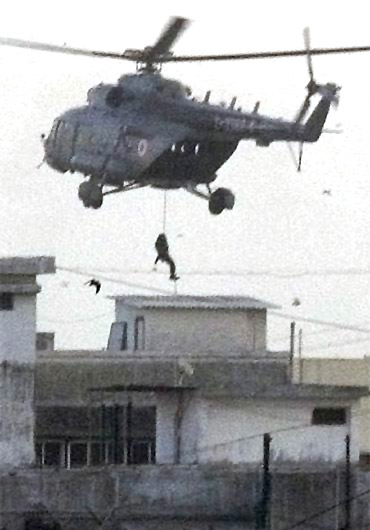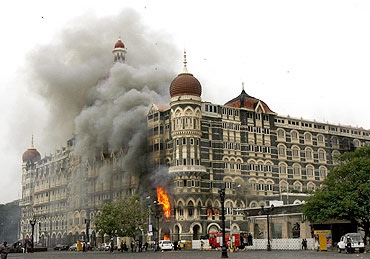

In October 2008, 26/11 conspirator Sajid Mir and Headley met in Pakistan and discussed the prospect of an attack on Jyllands-Posten's office, which would be preceded by extensive surveillance work to be performed by Headley. He recorded and saved notes reflecting the attack plan he had discussed with Mir.
In October 2008, Mir provided defendant Headley with a thumb drive containing information about Denmark, the city of Copenhagen and the Jyllands-Posten newspaper. In late December 2008 and early January 2009, Headley informed Pakistani-Canadian Tahawwur Rana, an accused in the 26/11 about the planned attack on the Jyllands-Posten and his intended travel to Denmark for the purpose of performing surveillance of the newspaper's facilities.
He obtained Rana's approval and assistance to identify himself as a representative of First World Immigration Services, who was planning to open an office in Copenhagen, and to gain entry to the Jyllands-Posten's offices by falsely expressing interest in placing an advertisement for First World in the newspaper. For years, Rana has been the proprietor of First World. Before leaving Chicago, Headley and Rana made business cards that identified Headley as a representative of immigration law center.
In late December 2008 and early January 2009, Headley, while in Chicago, sent emails to, and received emails from Syed in order to continue planning for the attack and coordinate his travel to Denmark to conduct surveillance.
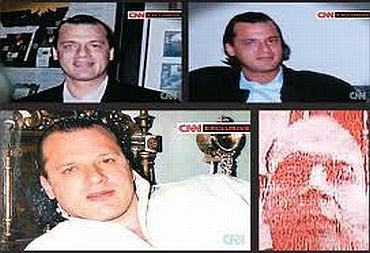
In January 2009, Headley traveled from Chicago to Denmark to conduct a recce of the Jyllands Posten offices in the cities of Copenhagen and Aarhus.
On January 20, 2009, Headley obtained entry to the newspaper office in Copenhagen on the pretext that he was seeking to place an ad on behalf of First World in the newspaper. He also scouted and videotaped the surrounding areas. On January 23, 2009, he obtained entry to the Jyllands Posten's office in Aarhus, on the same pretext.
On January 29, 2009, Rana, posing as Headley, sent an email to the newspaper, seeking placement of the advertisement. In late January 2009, Headley travelled to Pakistan and met separately with Sajid Mir and Syed concerning the planned attack on the newspaper office and provided each with videotapes of his Copenhagen surveillances. Subsequently, in March 2009, Mir informed Headley that Lashkar had put the attack on the newspaper on hold due to pressure on the terror outfit following the November 2008 Mumbai attacks.
In February 2009, Syed took Headley to meet Kashmiri in the Waziristan region of Pakistan. During the meeting, Kashmiri indicated that he had already reviewed he Copenhagen videotapes made by Headley and suggested that they consider using a truck bomb in the operation. He also indicated that he could provide manpower for the operation and that the participation of LeT was not necessary.
In or about May 2009, Syed and Headley went again to meet Kashmiri in Waziristan. During this meeting, Kashmiri informed them that he had met an European contact who could provide Headley with money, weapons and manpower for the attack on the newspaper. He directed Headley to meet with the European contacts.
In July 2009, Syed was arrested by Pakistani authorities. Following this, Headley contacted associates in Pakistan in an effort to learn whether he would be able to continue working with Syed. He then sent a messenger from Chicago to meet Kashmiri asking for advise after Syed's arrest and informing him about his unsuccessful efforts to get in touch with the European contacts.
Kashmiri sent back word that the planned operation in Denmark should continue and that Headley should continue his attempt in establishing contacts in Europe at the telephone numbers already provided.
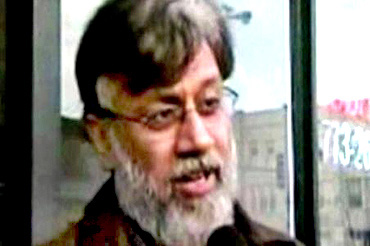
In late July and early August 2009, Headley travelled from Chicago to Europe and visited several places including Copenhagen to conduct additional surveillance of the Jyllands-Posten office and the surrounding area. He made approximately 13 additional surveillance videos. During the trip, he also attempted to obtain assistance from Kashmiri's European contacts.
On August 5, 2009, Headley returned to the United States, falsely informing a customs and border patrol inspector at the airport in Atlanta that he had visited Europe for business reasons related to First World. On August 22, 2009, he spoke with Syed, who who had been released from custody, from Chicago concerning, among other things, the efforts by Syed to contact Kashmiri, and the plans for the operation in Denmark.
In September 2009, Headley sought to pass a message through Syed to Kashmiri concerning suggestions about changes to the plan for the attack on the Jyllands-Posten House in Copenhagen.
In September 2009, Syed communicated with Headley, in Chicago by telephone and email concerning reports that Kashmiri had been killed in a drone attack and the implications of his possible death on the plan for the attack on Danish newspaper office. Headley discussed the same with Rana as well.
In late September 2009, Syed, from Pakistan, communicated with Headley in Chicago by telephone and email to reports that Kashmiri had not been killed and that he was anxious to move forward with the plan to attack the Jyllands-Posten office in Copenhagen.
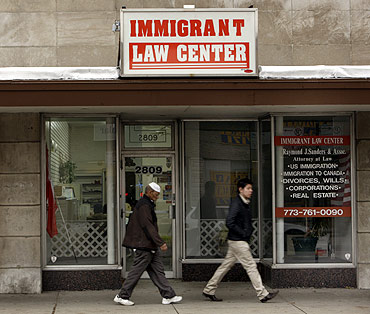
In the late summer of 2009, Rana and Headley agreed that funds that had been provided to Rana could be used to fund the plot to attack.
On October 3, 2009, Headley travelled to O'Hare Airport in Chicago, Illinois, intending to ultimately travel to Pakistan in order to meet Syed and Kashmiri, and to deliver to them approximately 13 surveillance videos. However, he was arrested before his trip to Pakistan.
From the above reconstruction, it is apparent that the real masterminds of the 26/11 terrorist strikes were Sajid Mir, an individual identified in the Fedral Bureau of Investigation documents merely as Person A, whose real identity is not yet clear and one Major (retd) Abdur Rehman Hashim Syed alias Pasha. According to the second report against Rana filed by the FBI in the court last year, he was in India in the third week of November 2008.
He flew from Mumbai to Dubai on a flight of the Emirates Airlines on November 21, 2008. He flew from Dubai to China by the same airlines on November 24, 2008, and from there returned to Chicago via Seoul on November 26, 2008, by the Asiana Airlines.

There is no reason to believe that Headley was in India during this period. The last of his five pre-26/11 visits to India was in July, 2008. It is not clear when Rana arrived in India in November, 2008, which places he visited and whom he met. It is also not clear which city he visited in China, what was the purpose of his visit to China and why his visit to China was so short.
Rana admitted to the FBI that during his visit to Dubai from November 21 to 24, 2008, he met Syed who was in touch with Kashmiri on behalf of Headley. He also confessed that he came to know from Pasha about the impending terrorist attacks by the LeT in Mumbai.
Rana sought to convey an impression that his visit (or visits) to India had nothing to do with the 26/11 attacks and that he came to know of the planned attacks only from Pasha in Dubai a few days November 26, 2008.
At the same time, it is clear from the papers filed by the FBI in the court that Rana personally knew both of Headley's handlers in Pakistan -- Syed of the 313 Brigade and an unidentified office-bearer of the LeT now identified as Sajid Mir.
